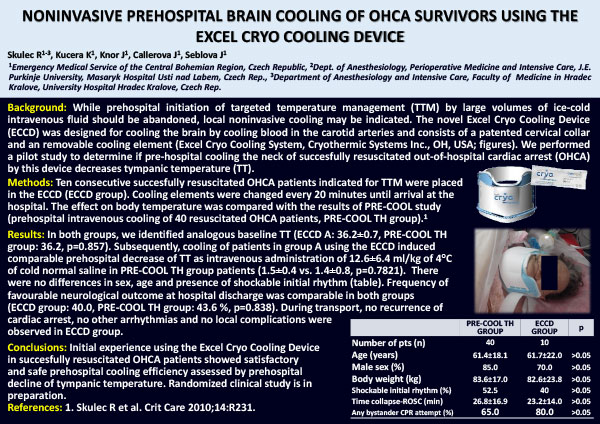Noninvasive Prehospital Cooling Using the Cryo Cooling System
- Average temperature drop of 1.7°C in 31 minutes1
– Tympanic temperature in healthy volunteers (University Hospitals, Cleveland, OH).
- Average temperature drop of 1.3°C in 45 minutes2
– Esophageal temperature in cardiac transport patients already cooled via chilled saline. (VitaLink/AirLink Critical Care Transport, New Hanover, NC)
- Equal temperature drop to Chilled Saline – 1.5°C for Cryothermic vs. 1.4°C for Chilled Saline3
– Tympanic temperature drop in prehospital SCA patients (Prague, CZ)
References:
- Cerebral Cooling Effectively Achieves Mild Therapeutic Hypothermia in Healthy Volunteers White, et. al., July 2013
- Maintenance of Therapeutic Hypothermia During Critical Care Interfacility Transport Collopy, et al, September 2014, Poster at the Air Medical Transport Conference.
- Noninvasive prehospital brain cooling of OHCA survivors using the Excel Cryo Cooling Device Skulec, Roman et al. Resuscitation , Volume 96, 134 . Skulec R et al. Brit Care 2010;14:R231.
Evidence Supports Early Cooling as an Alternative to Saline for SCA
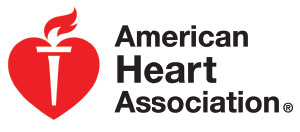
AMERICAN HEART ASSOCIATION GUIDELINES 2015
The Task Force recommends targeted temperature management for adults with out-of-hospital cardiac arrest with an initial shockable rhythm at a constant temperature between 32°C and 36°C for at least 24 hours.
Similar suggestions are made for out-of-hospital cardiac arrest with a nonshockable rhythm and in-hospital cardiac arrest. The Task Force recommends against prehospital cooling with rapid infusion of large volumes of cold intravenous fluid.2
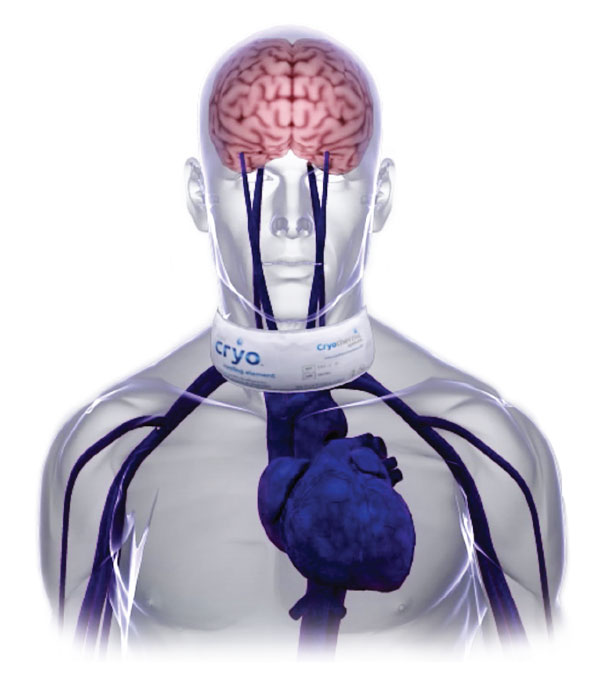
2. American Heart Association 2015 Guidelines for Cardiopulmonary Resuscitation and Emergency Cardiovascular Care, Part 8.
Issues with Chilled Saline
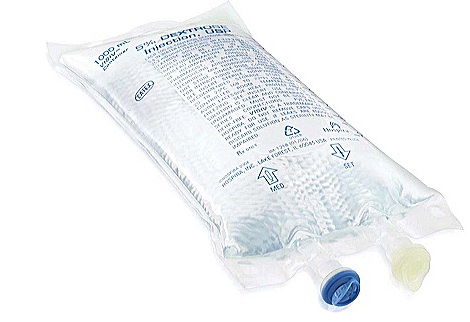
AHA & ILCOR STRONGLY RECOMMEND AGAINST COOLING WITH SALINE:3
- Hard to maintain cooling consistancy – patients re-warm.
- High rate of re-arrest (26%) and pulmonary edema.4
- Shivering is common side effect.
3. ILCOR Advisory Statement, 2015. 4. Kim F, et al. “Effect of prehospital induction of mild hypothermia on survival and neurological status among adults with cardiac arrest: a randomized clinical trial” JAMA 2013; DOI: 10.1001/jama.2013.282173.
Not All Cooling Packs Are Created Equal
THE CRYOTHERMIC COOLING PACK IS 15°C COLDER THAN STANDARD ICE PACKS
- Reaches -5.0°C in seconds
- Skin safe (proprietary fabric)
- 20-30 minutes below 0°C

Economic Impact of Fever
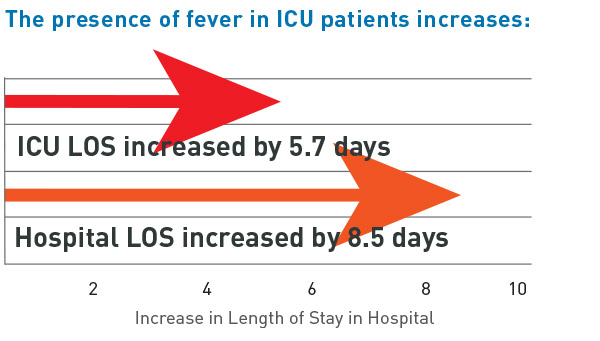
ICU &HOSITAL ECONOMIC IMPACT OF FEVER
Fever is detrimental in the setting of acute neurologic insults, and approximately 70% of Neurologic Intensive Care patients develop fever.
The increased length of stay due to fever equates to an estimate of $10,074 in additional ICU costs and $17,414 in additional hospital costs.5
5. Reaven et al., 2008

Request Information
Have questions about using the Cryothermic Cooling System as the Bridge to TTM?™
Contact us today with your specific needs or requests.
Contact us today with your specific needs or requests.

